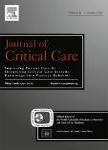版权所有:内蒙古大学图书馆 技术提供:维普资讯• 智图
内蒙古自治区呼和浩特市赛罕区大学西街235号 邮编: 010021

作者机构:Anhui Med Univ Affiliated Hosp 2 Dept Crit Care Med 2 Furong Rd 678 Hefei 230601 Anhui Peoples R China Anhui Med Univ Affiliated Hosp 2 Lab Cardiopulm Resuscitat & Crit Care Med Hefei 230601 Anhui Peoples R China Anhui Univ Key Lab Intelligent Comp & Signal Proc Minist Educ Hefei 230601 Anhui Peoples R China Anhui Univ Sch Integrated Circuits Hefei 230601 Anhui Peoples R China
出 版 物:《JOURNAL OF CRITICAL CARE》 (J. Crit. Care)
年 卷 期:2024年第82卷
页 面:154793-154793页
核心收录:
学科分类:1002[医学-临床医学] 1011[医学-护理学(可授医学、理学学位)] 10[医学]
基 金:National Natural Science Foundation of China Clinical Research training Program of the Second Hospital of Anhui Medical University [2020LCYB03] Scientific Research Fund of Anhui Medical University [2021xkj166] Research Fund of Anhui Institute of translational medicine [2022zhyx-C46] Health Research Program of Anhui [AHWJ2022b085] Natural Science Research Project Funding of Higher Education Institutions Anhui Province [2022AH040101]
主 题:Electrolyte K-means clustering Clinical phenotype Web-based application
摘 要:Background: Electrolyte disturbances are highly heterogeneous and severely affect the prognosis of critically ill patients. Our study was to determine whether data-driven phenotypes of seven electrolytes have prognostic relevance in critically ill patients. Methods: We extracted patient information from three large independent public databases, and clustered the electrolyte distribution of ICU patients based on the extreme value, median value and coefficient of variation of electrolytes. Three plausible clinical phenotypes were calculated using K-means clustering algorithm as the basic clustering method. MIMIC-IV was considered a training set, and two others have been designated as verification set. The robustness of the model was then validated from different angles, providing dynamic and interactive visual charts for more detailed characterization of phenotypes. Results: 15,340, 12,445 and 2147 ICU patients with electrolyte records during early ICU stay in MIMIC-IV, eICU-CRD and AmsterdamUMCdb were enrolled. After clustering, three reasonable and interpretable phenotypes are defined as alpha, beta and gamma according to the order of clusters. The alpha and gamma phenotype, with significant differences in electrolyte distribution and clinical variables, higher 28-day mortality and longer length of ICU stay (p 0.001), was further demonstrated by robustness analysis. The alpha phenotype has significant kidney injury, while the beta phenotype has the best prognosis. In addition, the assignment methods of the three phenotypes were developed into a web-based tool for further verification and application. Conclusions: Three different clinical phenotypes were identified that correlated with electrolyte distribution and clinical outcomes. Further validation and characterization of these phenotypes is warranted.